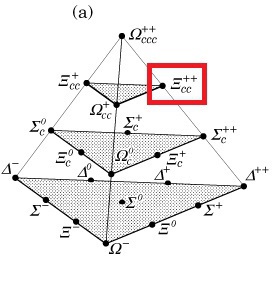Link: https://www.nytimes.com/2017/07/06/science/cern-quarks-charm-baryon.html
JULY 6, 2017
Physicists have discovered a particle that is doubly charming.
Researchers reported on Thursday that in debris flying out from the collisions of protons at the CERN particle physics laboratory outside Geneva, they had spotted a particle that has long been predicted but not detected until now.
The new particle, awkwardly known as Xi-cc++ (pronounced ka-sigh-see-see-plus-plus), could provide new insight into how tiny, whimsically named particles known as quarks, the building blocks of protons and neutrons, interact with each other.
Protons and neutrons, which account for the bulk of ordinary matter, are made of two types of quarks: up and down. A proton consists of two up quarks and one down quark, while a neutron contains one up quark and two down quarks. These triplets of quarks are known as baryons.
There are also heavier quarks with even quirkier names strange, charm, top, bottom and baryons containing permutations of heavier quarks also exist.
An experiment at CERN, within the behemoth Large Hadron Collider, counted more 300 Xi-cc++ baryons, each consisting of two heavy charm quarks and one up quark.
The existence of these particles has been predicted by the Standard Model, said Patrick Spradlin, a physicist at the University of Glasgow who led the research. Their properties have also been predicted.
The mass of the Xi-cc++ is about 3.8 times that of a proton. The particle is not stable. Dr. Spradlin said the scientists had not yet figured out its lifetime precisely, but it falls apart after somewhere between 50 millionths of a billionth of a second and 1,000 millionths of a billionth of a second.





